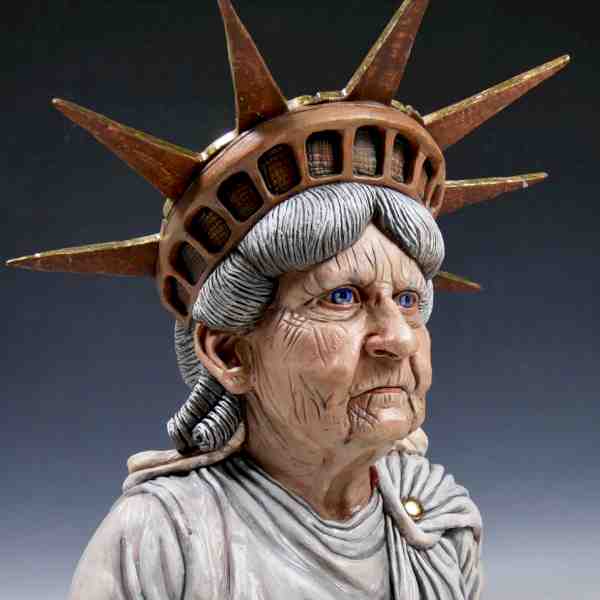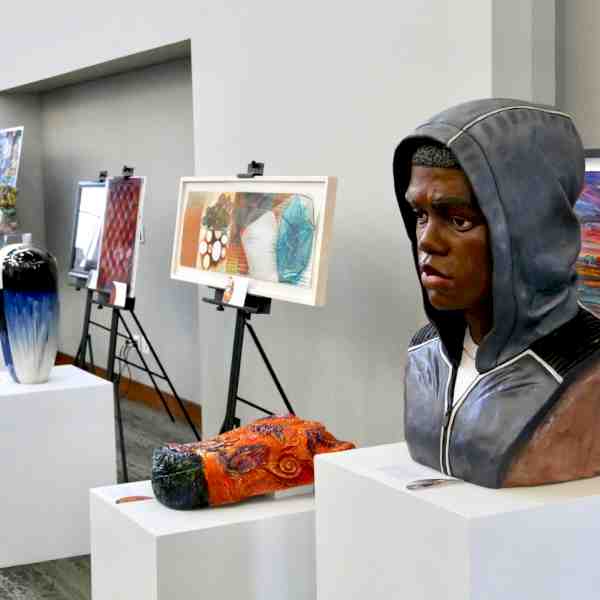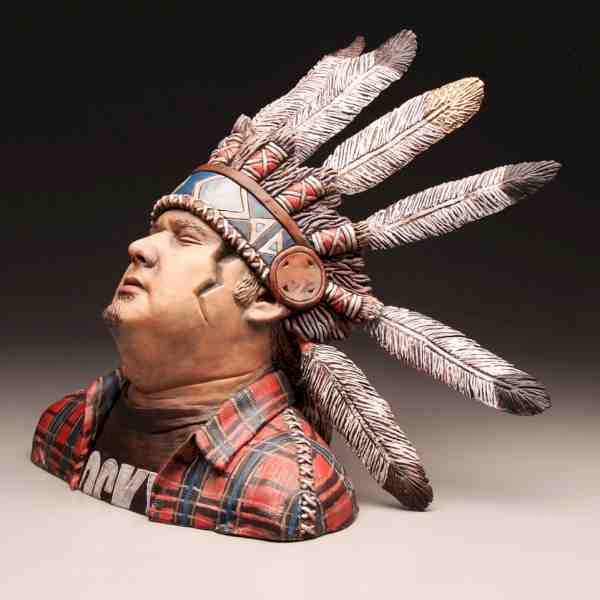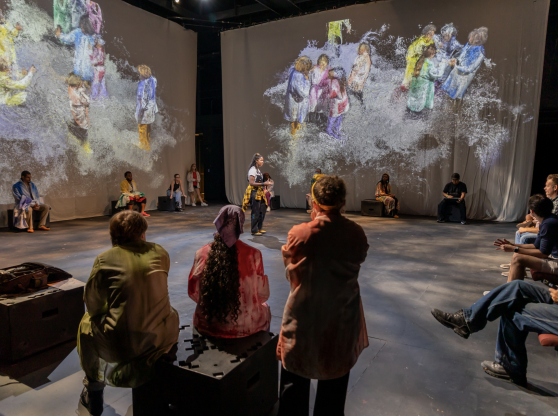“My work serves as a microcosm to engage with larger societal issues,” reads Nathan Murray’s website. This is the final sentence of his artist statement, an affirmation and declaration of his goal towards social change
Murray (MFA '15) is an African American sculptor whose work personifies the social injustice experienced within our society today. Through the creation of his ceramic sculptures, Murray sheds light on these subjects that are difficult to discuss in hopes of bringing attention to the importance of the much needed unification of society.
Murray was featured as the cover for Ceramic Monthly in March 2017. He is also an emerging artist fellow at the Lux Center for the arts, involved with community outreach, and exhibits work nationally. Below, Murray goes in depth about his artist process, influences and the change he wants his art to have on society.
Whitney: Why do you focus on contemporary issues of race, culture, and identity as the inspiration for your work?
Nathan: I engage with issues of race because systemic racism is still a pervasive problem in our society. The nature of these issues tends to be very polarizing in the current political climate. I try to personalize these issues in a way that breaks down preconceived prejudice and apathy. I do this by exploring challenging issues through the framework of individuals and their personal stories. These issues are much harder to ignore with an emotional connection to the individuals affected by them. My goal is presenting my sculptural work to spark a dialog and contribute to the larger discourse of social justice issues.
W: What is your process like to create a sculpture?
N: The great thing about ceramics is that there are many ways to get to the outcome you want. The process I use depends on what I need to make for the piece. If I’m working on a bust, I’ll probably build it solid and then hollow after I have the general form. This allows me to work on the whole piece without worrying about the bottom drying out enough for me to build on. It also helps things to happen quickly in the beginning as I move from a very general shape to a more refined form. Once the form is complete, I use slips and terra sigillata to block in areas of color that interact with marks in the clay. I complete the work with transparent acrylic washes and other cold finishes.
W: What does your feature in Ceramics Monthly mean for your career?
N: The article in Ceramics Monthly led to connecting with a lot of opportunities. I was surprised how many people reached out to me from all over the country. Two of these conversations led to exhibitions at Baltimore Clayworks and the American Museum of Ceramic Art in California. I was also asked to jury the The Figure in Clay at the Clay Center of New Orleans. I also had a lot of people with stories to share. Overall, I’d say it provided the opportunity to connect with people I might not have otherwise.
W: How do communities influence your artwork?
N: A lot of my recent work has been influenced by people I’ve met locally through community engagement in the arts. The work I did at UF was focused on systemic racism and police violence towards young African American men. After graduating, I knew I wanted to work closely with people in the community. As a resident at the Lux Center for the arts, I had the opportunity to do this though community outreach art classes. These included a youth detention facility, women in a substance abuse recovery facility and the Ponca Tribe of Nebraska. I really got to see the way a lot of these societal issues affect people on the personal level. These experiences have had a large impact on my current work.
W: How did your education at the University of Florida influence your career?
N: Grad school was a time for me to be completely immersed in the art world. My time at UF allowed me to focus the conceptual ideas of my work with the feedback and support of fellow students and faculty. The immersion in a small group of exceptional artists created a great atmosphere for artistic growth. These connections have extended beyond my time at UF and the professional practice skills have played a large role in my studio practice.
Follow Murray on Instagram @nathanmurraystudio.






